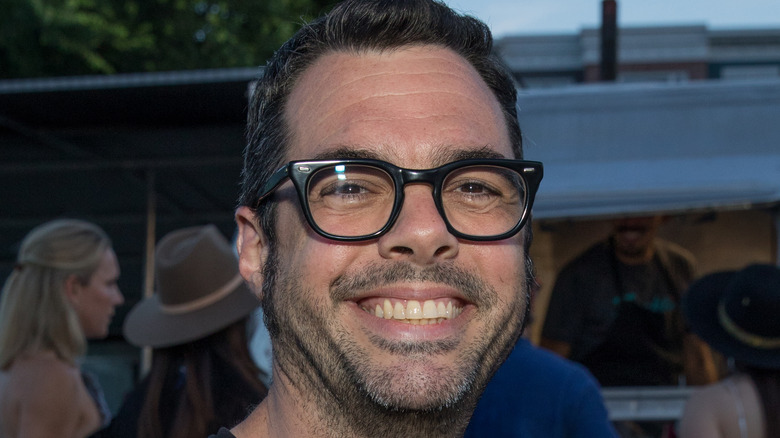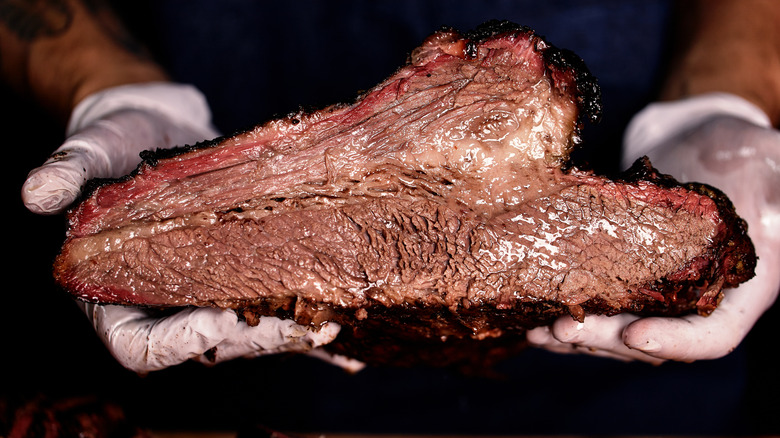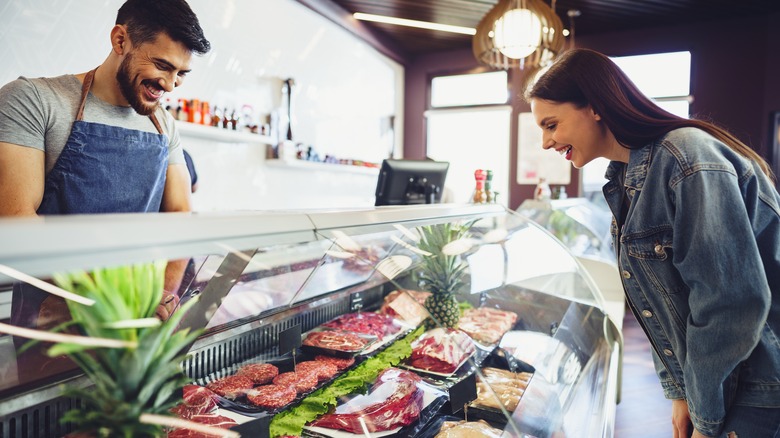The Brisket Cut For The Best Barbecue, According To Aaron Franklin
If you're looking for someone with the credentials to speak authoritatively on brisket, look no further than pitmaster Aaron Franklin. Not only does he smoke around 20,000 pounds of the stuff each month for his popular restaurant, Franklin Barbecue in Austin, Texas, but he's also written several books on the subject. Clearly, he knows a thing or two about meat.
So when Franklin says the best Texas brisket is made with the packer cut, rather than the point or flat, we listen. What makes this cut so steller is that it gives you the best of both worlds — it's literally the two cuts combined — while helping each component achieve even higher levels of deliciousness by adding in its signature extra layer of fat, called the fat cap. For maximum flavor and tenderness, slow smoking is Franklin's recommended packer preparation. But grilling and roasting are also options, and however you go about it, packer-cut brisket will surely leave you satisfied — especially when making barbecue brisket with cowboy butter.
Why is the packer cut superior for barbecue?
If you're not sure where brisket comes from, you can orient yourself to the cut by thinking of it as the cow's pectoral muscle. Since brisket is cut from a very strong, collagen-dense region of the animal, the best method for cooking it is low and slow. This allows time for the tough muscle fibers to soften and chewy connective tissue to melt into flavorful gelatin, which can be absorbed into the meat resulting in some truly next-level deliciousness.
There are three different ways for this cut to be sold: whole — called the packer cut — or broken down and sold in its two component pieces, the flat and point. Both are delicious but have both pros and cons: the flat, or deckle of beef, is a leaner cut that's readily available at most supermarkets but is less juicy. The point has more fat marbled throughout and therefore more flavor, but also shrinks down considerably as fat renders.
But by combining both cuts, the packer offsets the drawbacks of the individual portions. When smoked for a long period, the extra fat cap of the whole brisket and more marbled point portion draws extra moisture and flavor into the leaner flat cut, resulting in an overall more tender, juicy, flavorful barbecue experience. No wonder Franklin says the packer is best suited to this preparation.
How to get a packer cut for yourself
Perhaps the only downside to the packer cut for home chefs is that it's somewhat harder to find than its component pieces. Typically weighing somewhere between 10 and 16 pounds, most grocery stores won't keep full brisket routinely stocked in their meat sections. That doesn't mean you won't be able to get your hands on one — just that you'll have to plan ahead and take a few extra steps to do so.
When you're ready to take on a whole brisket yourself, you'll want to get in touch with a butcher. While some will be able to accommodate such a request on short notice, it's best to give yourself extra time in case they can't. If you're not able to find one at a traditional supermarket, you can also special order a whole brisket online or from a local farm. Not only can local producers likely offer you fresher meat than you'll find at the store, but you'll also be supporting local agriculture. Now that's a win-win situation!



